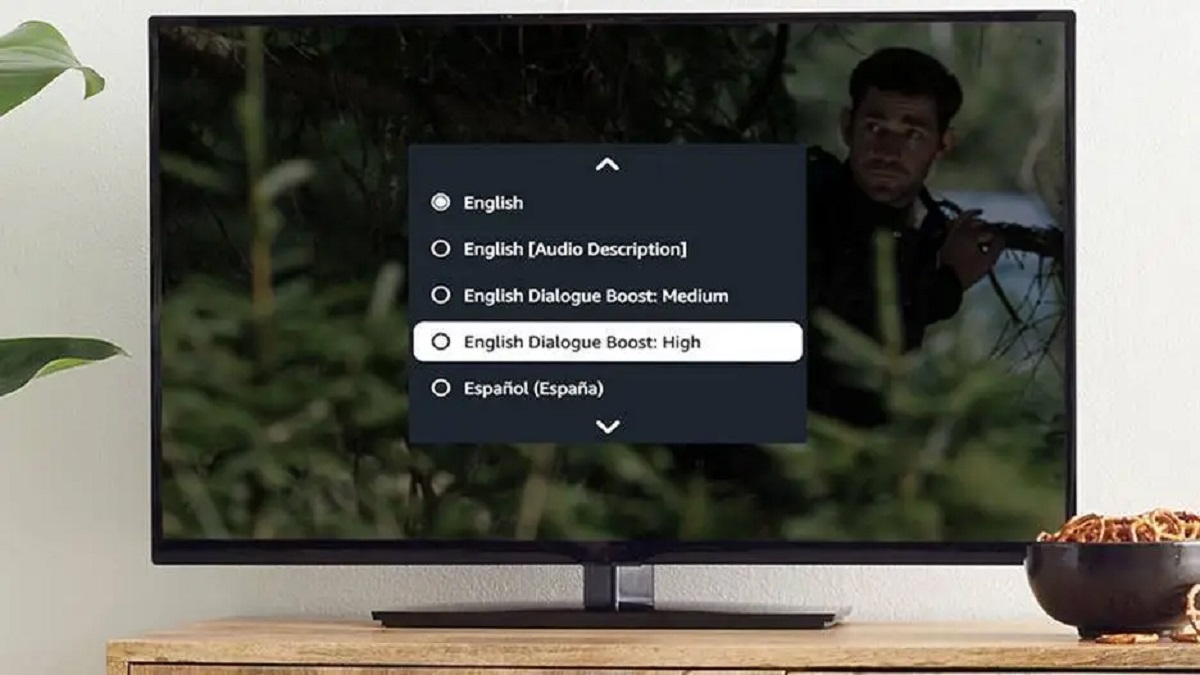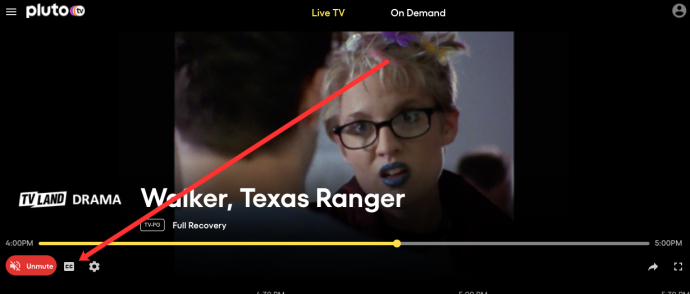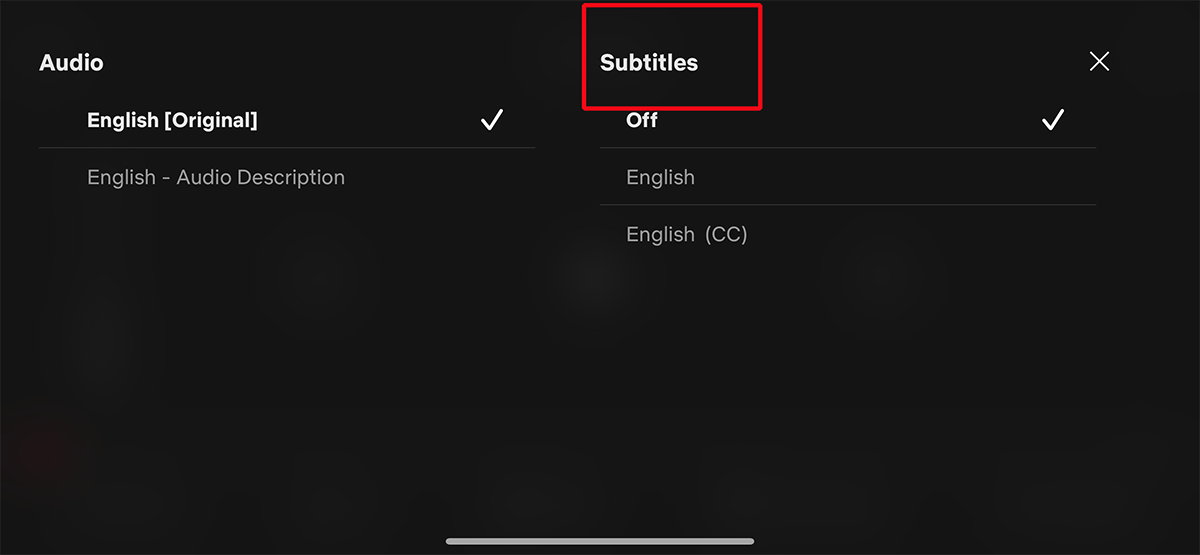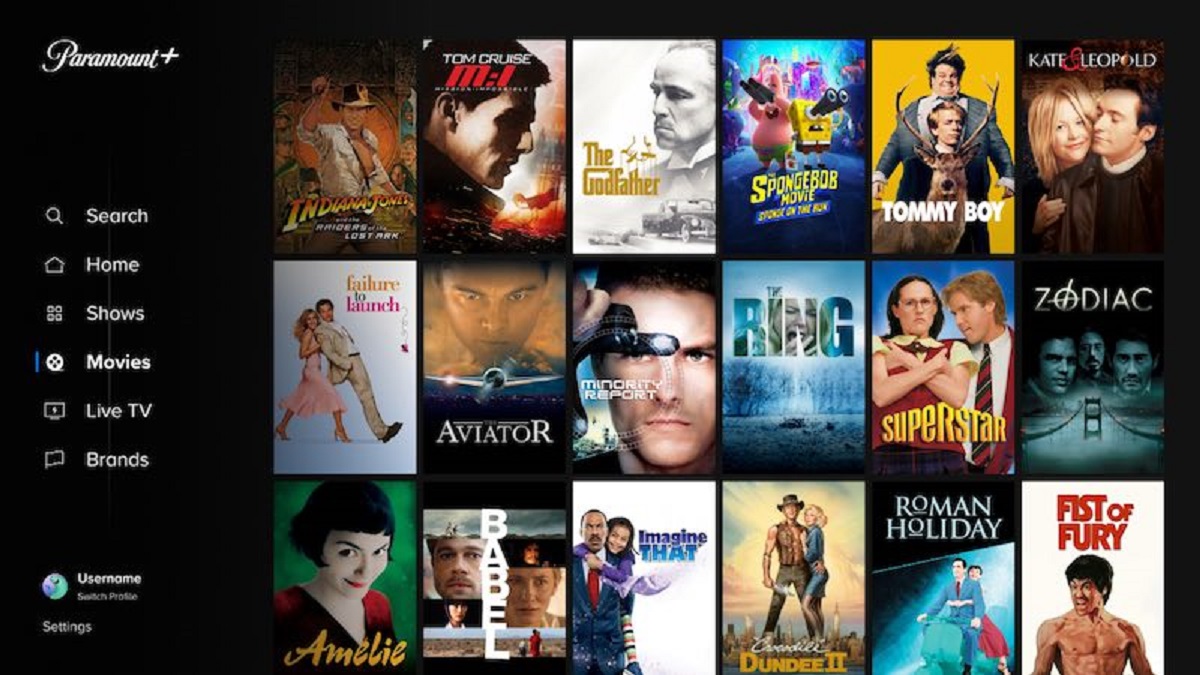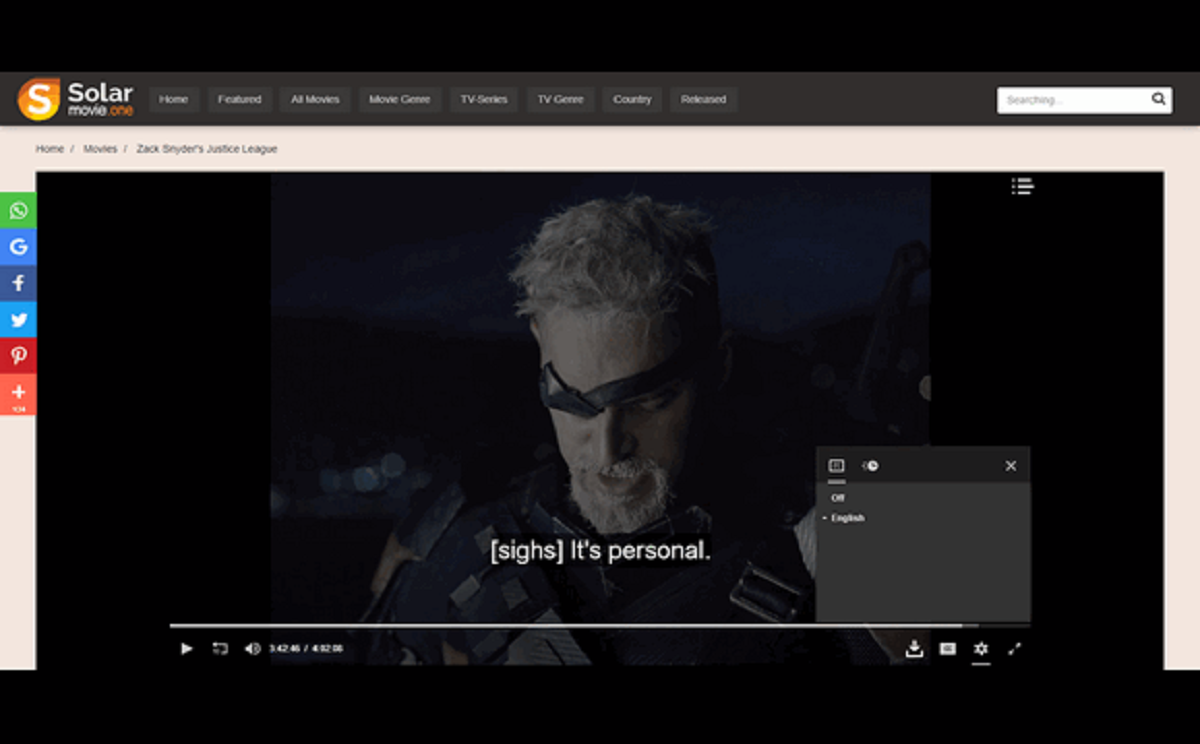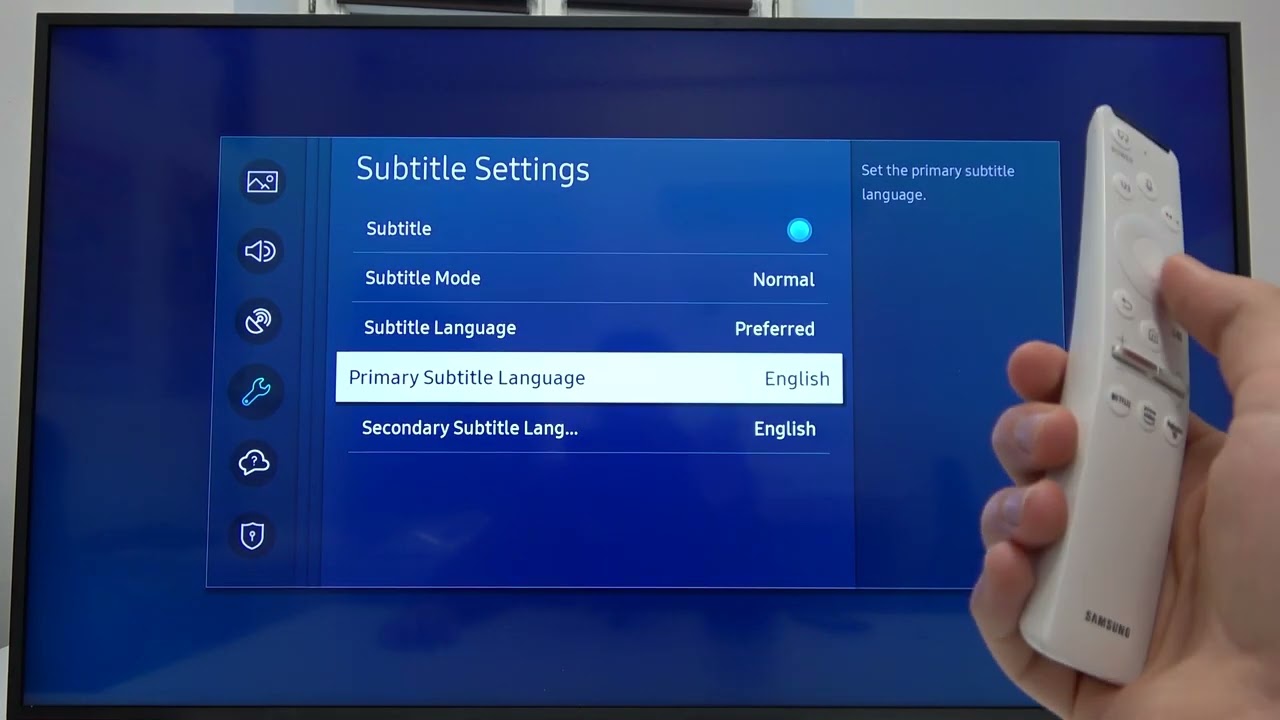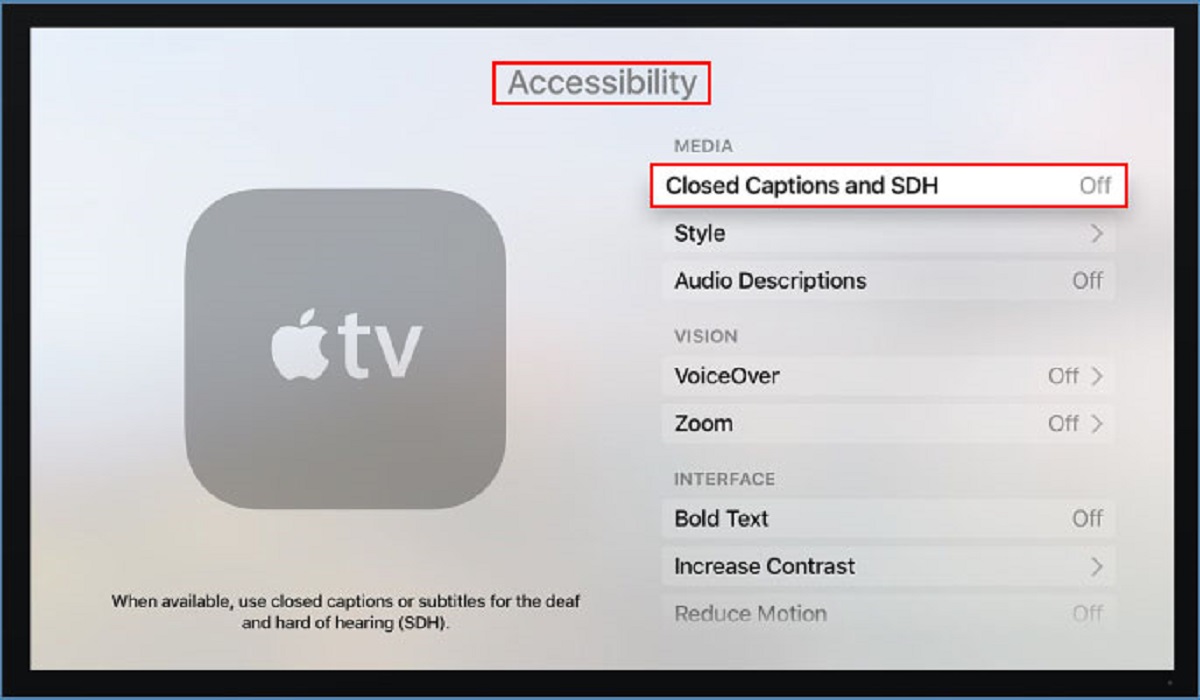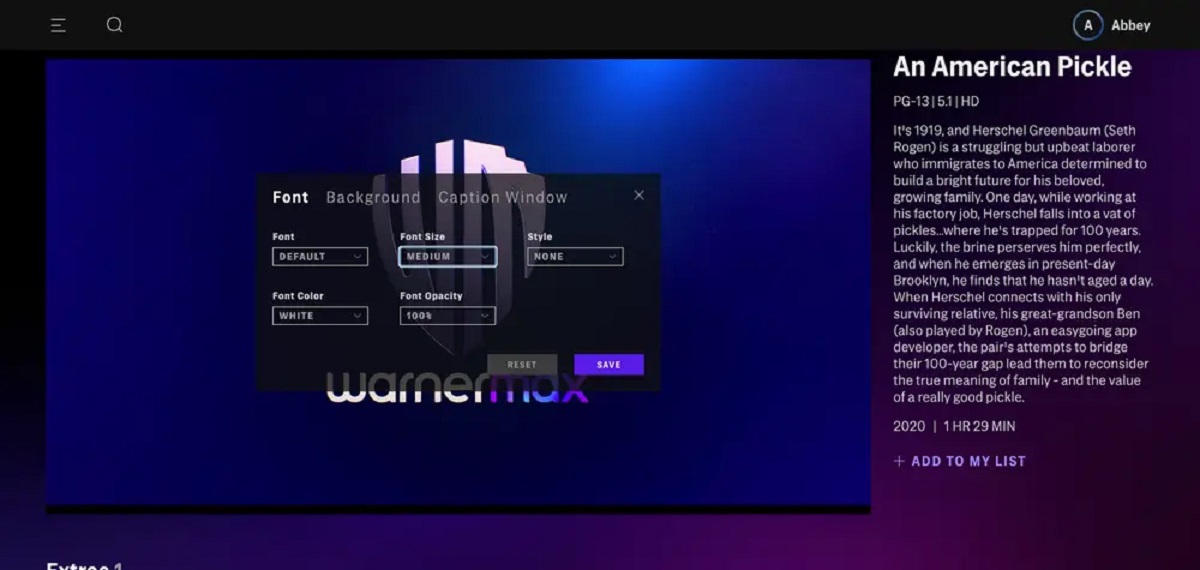Introduction
Have you ever found yourself wondering why you can’t watch TV without subtitles? It seems like subtitles have become a staple of our viewing experience, whether we’re watching movies, TV shows, or even streaming content online. They appear on our screens, providing a text representation of the dialogue and sound effects happening on screen. But have you ever stopped to think about the reasons behind this widespread use of subtitles?
In this article, we will explore the various factors that contribute to the prevalence of subtitles in today’s media consumption. From hearing impairments to language barriers, there are several reasons why people rely on subtitles to enhance their viewing experience. By understanding these reasons, we can gain insight into how subtitles have become an integral part of our TV-watching habits.
While some may argue that subtitles can be distracting or take away from the immersive experience, it’s important to recognize that subtitles serve a purpose beyond the individual preferences of viewers. They provide accessibility to those with hearing impairments, aid in understanding accents or dialects, and even assist in language learning. For others, subtitles simply offer an additional level of comprehension and retention.
In the following sections, we will delve into each of these reasons in more detail, shedding light on why subtitles have become a default setting for many. Whether you find yourself relying on subtitles due to a hearing impairment, struggling to understand accents, or simply using them as a learning tool, this article aims to shed light on the various reasons why people can’t seem to part with subtitles when watching TV.
Understanding the Different Reasons for Using Subtitles
Subtitles are not just a convenience; they serve a variety of purposes, making TV shows and movies more accessible and enjoyable for a wide range of viewers. By examining the different reasons people use subtitles, we can gain a deeper understanding of their significance in the world of media.
One of the most common reasons for using subtitles is to accommodate individuals with hearing impairments. For those who are deaf or hard of hearing, subtitles provide a means of accessing the audio content of a show or movie. By displaying the dialogue and sound effects in text format, subtitles allow individuals with hearing impairments to fully engage with the storyline and enjoy the audiovisual experience.
Another reason people rely on subtitles is the difficulty in understanding accents or dialects. In today’s multicultural world, it’s not uncommon to come across characters speaking with different accents or using regional dialects. For some viewers, this can pose a challenge in comprehending the dialogue. Subtitles help bridge this gap, ensuring that all viewers can understand and follow the story without missing crucial details.
Background noise and distractions can also hinder our ability to fully grasp what is being said on screen. Whether it’s a noisy environment or simply a scene with intricate sound design, subtitles provide clarity and prevent us from missing important dialogue. They act as a safety net, ensuring that even in less than ideal listening conditions, we can still understand and enjoy the audio of a TV show or movie.
Subtitles are also beneficial for those learning a second language. Watching TV shows or movies in a foreign language can be a valuable language learning tool. By reading the subtitles in their native language, learners can simultaneously improve their listening skills and expand their vocabulary. Subtitles provide a bridge between the spoken and written language, making it easier for learners to follow along and comprehend the content.
Moreover, subtitles cater to different learning styles, particularly for visual learners. While some individuals may find it easier to learn through auditory cues, others rely more on visual information. Subtitles provide a visual representation of the spoken words, aiding in the comprehension and retention of information. Visual learners can benefit greatly from this dual input of audio and text, enhancing their overall learning experience.
Overall, subtitles offer a range of benefits that go beyond mere convenience. They provide accessibility for individuals with hearing impairments, help overcome language barriers, ensure comprehension in noisy environments, aid language learning, and cater to different learning styles. The next time you watch a TV show or movie with subtitles, remember that they play an essential role in making the content more inclusive, informative, and enjoyable for a diverse audience.
Hearing Impairments
One of the primary reasons why many individuals rely on subtitles when watching TV is to accommodate hearing impairments. For those who are deaf or hard of hearing, subtitles serve as a lifeline, providing access to the audio content that would otherwise be inaccessible to them.
Hearing impairments can range from mild to profound, and subtitles ensure that individuals with varying degrees of hearing loss can still enjoy and engage with the entertainment medium. By displaying the dialogue and sound effects in text format, subtitles offer a visual representation of the audio, allowing people with hearing impairments to follow the storyline, understand character interactions, and appreciate the emotional nuances portrayed on screen.
Furthermore, subtitles not only convey the dialogue but also include crucial elements such as sound descriptions, music cues, and other auditory information. This comprehensive approach ensures that individuals with hearing impairments do not miss out on important auditory cues and can fully immerse themselves in the audiovisual experience.
Subtitles can also be beneficial for individuals who wear hearing aids or cochlear implants. While these assistive devices amplify sound, they may not always provide perfect clarity, especially in noisy or challenging listening environments. Subtitles serve as a supplementary aid, enhancing comprehension and reducing the strain of trying to decipher the dialogue solely through hearing aids or implants.
It’s worth noting that subtitles are not limited to individuals with permanent hearing impairments. Temporary situations, such as ear infections or post-surgical recovery, can also impact one’s ability to hear clearly. In such cases, subtitles offer a temporary solution, allowing individuals to continue enjoying TV shows and movies while their hearing recovers.
Moreover, subtitles can even benefit individuals with age-related hearing loss. As people age, it is common for hearing abilities to decline, making it more challenging to follow conversations or discern dialogue in TV shows and movies. Subtitles can significantly improve understanding and enjoyment for older adults, helping them stay engaged with their favorite programs.
Overall, subtitles play a crucial role in making television accessible and inclusive for individuals with hearing impairments. They provide a means of equal participation, enabling those with hearing loss to fully immerse themselves in the audiovisual content and enjoy the same level of entertainment as their hearing counterparts.
Difficulty Understanding Accents or Dialects
Another common reason why many people rely on subtitles when watching TV is the difficulty in understanding accents or dialects. As our world becomes increasingly globalized, it’s not uncommon to encounter characters speaking with different accents or using regional dialects. While this diversity adds richness to storytelling, it can pose a challenge for viewers who are not accustomed to or familiar with those particular accents.
Subtitles act as a valuable aid in bridging the comprehension gap caused by accents or dialects. By displaying the dialogue in text format, subtitles ensure that all viewers can understand and follow the story without missing important plot points or dialogue nuances. They provide a visual representation of the spoken words, helping viewers overcome any language barriers that accents may present.
AddiAdditionally, subtitles can help viewers develop familiarity with different accents and dialects over time. By reading the dialogue while simultaneously listening to the characters speak, viewers can start associating the written words with the corresponding speech patterns. This exposure can gradually train the ear to become more attuned to accents and improve comprehension without relying solely on subtitles.
In addition to understanding accents, subtitles also assist in deciphering unfamiliar vocabulary or colloquial expressions that may be specific to a particular region or dialect. They provide context and clarification, ensuring that viewers do not miss out on the subtle nuances and cultural references embedded in the dialogue.
Furthermore, subtitles can be beneficial for individuals who are non-native speakers of the language in which the TV show or movie is presented. Watching content in a foreign language can be a great learning opportunity, but it can also present challenges in understanding the dialogue, especially when spoken at a natural pace with nuances of different accents. Subtitles allow non-native speakers to grasp the meaning of the dialogue more easily, expand their vocabulary, and improve their overall language proficiency.
Overall, subtitles are an invaluable tool in overcoming the difficulty of understanding accents or dialects. They provide a visual aid that ensures all viewers, regardless of their familiarity with different accents, can fully comprehend and appreciate the content they are watching. Subtitles bridge the gap in communication, making TV shows and movies more inclusive and enjoyable for a diverse audience.
Background Noise or Distractions
We’ve all experienced situations where background noise or distractions make it difficult to fully grasp the dialogue in a TV show or movie. Whether it’s a crowded coffee shop, a noisy household, or even an intense action scene with explosions and sound effects, these external factors can hinder our ability to hear and understand what is being said on screen. This is where subtitles come to the rescue.
Subtitles provide clarity and prevent us from missing out on important dialogue or plot points in the midst of noisy or distracting environments. By displaying the dialogue and sound effects in text format, subtitles allow us to follow the story regardless of the surrounding noise. They act as a safety net, ensuring that even in less-than-ideal listening conditions, we can still fully comprehend and enjoy the audio of a TV show or movie.
Moreover, subtitles are particularly beneficial for individuals who may have auditory processing difficulties. These individuals may struggle to filter out background noise and focus solely on the dialogue. By having the text display on screen, subtitles help to direct their attention and provide a clear understanding of what is being said, even amidst distracting sounds.
Subtitles also come in handy for viewers who prefer watching TV shows or movies with the volume turned down low. It could be due to a sleeping baby in the room, the need to maintain a quiet environment, or simply a personal preference. In these instances, relying on subtitles ensures that viewers can still follow the storyline and dialogue without needing to increase the volume.
Furthermore, subtitles can serve as a helpful tool for individuals with attention disorders or difficulties in focusing. These individuals may find it challenging to concentrate on the audio alone, and subtitles can provide a visual aid that assists in their comprehension and retention of information. By having the dialogue displayed on screen, viewers can reinforce their understanding of the story and stay engaged even in the presence of distractions.
Overall, subtitles offer a practical solution for overcoming background noise and distractions when watching TV shows or movies. They allow us to fully immerse ourselves in the content despite external factors that might otherwise hinder our ability to understand the dialogue. Subtitles provide an inclusive and enjoyable viewing experience, regardless of the listening environment or personal preferences.
Second Language Learning
Watching TV shows and movies in a second language has become a popular way to enhance language skills and immerse oneself in different cultures. Subtitles play a vital role in facilitating second language learning, making content more accessible and enjoyable for language learners.
For individuals who are learning a new language, subtitles provide a bridge between the spoken and written word. By displaying the dialogue in text format, subtitles offer a visual aid that helps learners associate the spoken words with their written counterparts. This visual reinforcement aids in vocabulary expansion, grammatical understanding, and overall language comprehension.
Subtitles also play a crucial role in improving listening skills. By watching content with subtitles, learners can simultaneously read along and hear the pronunciation and intonation of the words. This combination of audio and visual input reinforces language acquisition, helping learners internalize correct pronunciation and intonation patterns.
Additionally, subtitles provide context and clarification for unfamiliar words or phrases that learners may encounter. Learners can pause, rewind, and review the subtitles to ensure they grasp the meaning of certain expressions or idiomatic language. This active engagement with the subtitles fosters a deeper understanding of the language and enriches the learning experience.
Furthermore, subtitles aid in building confidence for language learners. By watching TV shows or movies in a foreign language with subtitles, learners can follow along, understand the storyline, and feel a sense of accomplishment in comprehending the dialogues. This boosts their confidence and motivation to continue their language learning journey.
It’s important to note that subtitles can be used differently depending on the learner’s proficiency level and language learning goals. Beginners may rely more heavily on subtitles, while more advanced learners may gradually reduce their reliance as their language skills improve. Subtitles provide the flexibility to adapt and cater to the specific needs and progress of each learner.
Overall, subtitles serve as a valuable tool for language learners, enabling them to watch TV shows and movies in a second language while supporting their understanding, vocabulary acquisition, listening skills, and overall language development. They make language learning an engaging and immersive experience that goes beyond traditional methods, allowing learners to interact with authentic, real-world language in a meaningful way.
Visual Learners
For individuals who are visual learners, subtitles can be an invaluable aid when watching TV shows and movies. While some people may learn better through auditory cues, visual learners thrive on visual information and benefit greatly from the use of subtitles.
Subtitles provide a visual representation of the spoken words, helping visual learners better comprehend and retain information. By reading the dialogue while simultaneously hearing it, these learners receive dual input of audio and text, which reinforces their understanding and retention of the content.
Visual learners often rely on visual cues, such as images, diagrams, and written text, to process information. Subtitles align perfectly with their preferred learning style, as they offer a tangible and visual element that complements the auditory aspect of TV shows and movies. Visual learners can read the subtitles and mentally connect the written words with the corresponding speech, facilitating a deeper understanding and comprehension of the material.
In addition to aiding comprehension, subtitles also help visual learners follow the plotline more effectively. They provide clarity and ensure that visual learners do not miss out on important dialogue or subtle details that might have been missed purely through auditory processing.
Furthermore, subtitles can enhance the overall viewing experience for visual learners by providing additional context and information. They can include descriptions of ambient sounds, music, and other auditory elements that contribute to the atmosphere of a scene. This extra layer of detail provides visual learners with a more complete understanding of the audiovisual content and enhances their engagement and enjoyment of the material.
Subtitles can also benefit visual learners in terms of vocabulary expansion. By reading the subtitles, learners may encounter new words, expressions, and idiomatic language that they may not have come across otherwise. This exposure to diverse vocabulary further enriches their language skills and supports their overall learning process.
Overall, subtitles cater particularly well to visual learners, providing a visual representation of the spoken words. They support comprehension, retention, and engagement, aligning with the learning preferences of individuals who thrive on visual information. For visual learners, subtitles offer a valuable tool for enhancing their understanding and enjoyment of TV shows and movies.
Enhancing Comprehension and Retention
Subtitles are not merely a tool for accessibility; they also play a significant role in enhancing comprehension and retention when watching TV shows and movies. By providing a visual representation of the dialogue and sound effects, subtitles ensure that viewers can fully understand and absorb the content they are watching.
First and foremost, subtitles help to overcome any language barriers that may exist. Whether it’s watching content in a foreign language or struggling to understand complex dialogue, subtitles provide a textual aid that ensures viewers do not miss out on crucial information. They serve as a safety net, allowing viewers to catch every word and easily follow the storyline.
In addition, subtitles can assist in the comprehension of dialogues that are spoken quickly or with strong accents. By displaying the dialogue in text format, subtitles offer a visual cue that helps viewers process and understand the spoken words more effectively. This visual reinforcement aids comprehension, ensuring that viewers catch every nuanced detail.
Moreover, subtitles can be especially beneficial when watching TV shows or movies with intricate plotlines, multiple characters, or fast-paced dialogue. In complex storytelling, it’s not uncommon for important information to be conveyed through dialogue that may be missed or misunderstood if solely relying on auditory comprehension. Subtitles provide a visual anchor, allowing viewers to follow along and fully grasp the intricacies of the narrative.
Subtitles also help with the retention of information. By combining the auditory and visual elements of TV shows and movies, subtitles reinforce understanding and aid in memory recall. Reading the subtitles while simultaneously listening to the dialogue creates a multisensory experience that enhances information retention, as it taps into both auditory and visual memory systems.
Furthermore, subtitles can be useful for viewers who prefer a different language or have difficulty with verbal processing. Some individuals may find it easier to read and understand written text rather than rely solely on auditory cues. Subtitles offer an additional layer of comprehension, ensuring that viewers don’t miss important details and facilitating a more thorough understanding of the content.
Overall, subtitles play a crucial role in enhancing comprehension and retention when watching TV shows and movies. They provide a visual representation of the dialogue and sound effects, aiding viewers in understanding complex dialogues, overcoming language barriers, following fast-paced storytelling, and improving information retention. Subtitles are a valuable tool that not only ensures inclusivity but also enhances the overall viewing experience and engagement with the content.
Comfort and Habit
For many individuals, watching TV shows and movies with subtitles has become a matter of comfort and habit. It has become ingrained in their viewing experience, providing a sense of familiarity and ease that enhances their enjoyment of the content.
One reason why people find comfort in using subtitles is the assurance of not missing any dialogue or details. Whether it’s due to a noisy environment, accents, or simply personal preference, subtitles ensure that viewers can catch every word spoken on screen. This added layer of comprehension gives viewers a sense of confidence and eliminates the fear of potentially missing important information.
Additionally, subtitles can be comforting for individuals who have hearing difficulties, even if not classified as hearing impaired. It’s natural to occasionally miss certain words or phrases in rapid dialogue, and subtitles act as a safety net, ensuring that viewers can quickly read and understand any missed or unclear parts. This reassurance allows viewers to relax and fully immerse themselves in the viewing experience.
Furthermore, subtitles have become habitual for some individuals. They have grown accustomed to having subtitles on during their TV-watching sessions, and it has become their preferred way of engaging with the content. This habit provides a sense of familiarity and comfort, similar to other daily rituals or routines that bring a sense of security and relaxation.
Another aspect that adds to the comfort of subtitles is the ease of following along, especially with fast-paced or complex dialogues. By having the dialogue displayed in written form, viewers can catch every word and easily follow the conversation without straining to listen or decipher unfamiliar accents. This effortless understanding contributes to a more enjoyable and relaxing viewing experience.
Subtitles can also provide a sense of inclusivity and accessibility. For individuals who are multi-lingual or non-native speakers of the language portrayed in the content, subtitles ensure that they can understand and fully engage with the story. This sense of inclusivity and the ability to connect with the characters and plot on a deeper level fosters a greater level of comfort and enjoyment.
In summary, the use of subtitles has become a matter of comfort and habit for many viewers. They offer reassurance, convenience, and a sense of relaxation, providing an added layer of comprehension and allowing viewers to fully engage with the content. Whether it’s to overcome hearing challenges, follow fast-paced dialogue, or simply due to personal preference, subtitles have become an integral part of the viewing experience for many individuals.
Emotional Connection
Subtitles not only serve a practical purpose in enhancing comprehension but also play a significant role in fostering an emotional connection between viewers and the content they are watching. Through the use of subtitles, viewers can deepen their understanding of the characters’ emotions, nuances, and the overall sentiment portrayed in the dialogue.
One way subtitles facilitate this emotional connection is by accurately conveying the tone and subtext of the dialogue. Subtitles provide additional information beyond the literal translation of the words spoken. They can reflect the characters’ emotions, sarcasm, or even humor through carefully chosen phrasing and timing. Consequently, viewers are more likely to experience the intended emotional impact of the scene, enabling a deeper engagement with the narrative and the characters.
Subtitles also ensure that viewers catch important non-verbal cues such as sighs, gasps, or whispers, which can convey a wealth of emotional information. By displaying these non-verbal sounds in text format, subtitles heighten the emotional experience and make it more accessible for viewers who may have difficulty hearing or interpreting these subtle cues.
Moreover, subtitles can help create a connection by accurately conveying the cultural and regional nuances embedded in the dialogue. When watching foreign-language content, subtitles provide contextual information and explanations for cultural references or idiomatic expressions that viewers may not be familiar with. This knowledge fosters a deeper appreciation for the cultural nuances portrayed in the content and strengthens the emotional connection between the viewers and the material.
Subtitles also play a role in preserving the authenticity of the content. When original language dialogues are subtitled instead of dubbed, the viewers can connect with the natural and authentic performances of the actors. This connection to the original performances enhances the emotional impact and creates a more immersive experience for the viewers.
Furthermore, for viewers who are learning a new language, subtitles can add an emotional dimension to their language learning journey. By understanding the emotions conveyed in the dialogue, they can develop a deeper appreciation and connection with the language and culture they are studying. Subtitles allow them to connect with the characters’ experiences and emotions, fostering a sense of empathy and creating a richer language-learning experience.
Overall, subtitles enable viewers to establish an emotional connection with the content they are watching. They accurately convey the tone, subtext, and non-verbal cues, heightening the emotional experience and facilitating a deeper engagement with the narrative and characters. Whether through cultural nuances, preserving authenticity, or aiding language learning, subtitles enhance the emotional connection between viewers and the content, making it a more immersive and meaningful experience.
Conclusion
Subtitles have become an integral part of the TV-watching experience for numerous reasons. From accommodating individuals with hearing impairments to aiding language learning, subtitles serve a diverse range of functions that make television more accessible and enjoyable for a wide audience.
For individuals with hearing impairments, subtitles provide a lifeline, ensuring they can fully engage with the audio content of TV shows and movies. They offer a visual representation of the dialogue and sound effects, making the audiovisual experience inclusive and accessible to everyone.
Subtitles also bridge the gap in understanding accents or dialects. Whether it’s unfamiliar accents or regional dialects, subtitles assist viewers in comprehending the dialogue, ensuring that cultural nuances and subtleties are not lost in translation.
Background noise and distractions can hinder our ability to fully grasp the dialogue on screen. Subtitles act as a safety net, enabling viewers to overcome these challenges and follow the story even in less-than-ideal listening conditions.
Subtitles also play a significant role in language learning. By providing a visual aid and reinforcing the connection between written and spoken language, subtitles assist learners in expanding their vocabulary and improving their listening skills.
Visual learners benefit greatly from subtitles, as they provide a visual representation of the dialogue, aiding in their comprehension, retention, and overall engagement with the content.
Moreover, subtitles enhance comprehension and retention for all viewers. They provide clarity, ensure that no dialogue is missed, and aid in understanding complex plotlines and fast-paced dialogue.
Finally, subtitles offer comfort and familiarity to viewers, becoming a habit in their viewing experience. They provide reassurance, ease of understanding, and a sense of inclusivity, making TV shows and movies more enjoyable and accessible for everyone.
Overall, subtitles have become an essential part of our TV-watching experience. They serve various purposes, from accessibility to language learning, providing a bridge between spoken and written words. By understanding and appreciating the reasons behind their prevalence, we can fully embrace the significant role subtitles play in making TV shows and movies accessible, engaging, and inclusive for audiences around the world.







